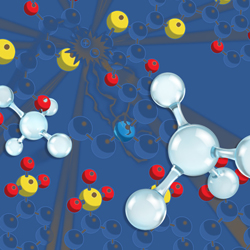Quantum Dynamics in Theory, Numerics and in Experimental Research
 Quantum field theory has become an invaluable conceptual and mathematical framework for addressing problems across the sciences. In recent years we observe an expansion of applications reaching from condensed-matter and statistical physics to enzymatic reactions or protein-ligand interactions. On the experimental side methods based on the Raman effect, the inelastic scattering of photons on a quantized system, span a giant number of evolving techniques and applications in physics and interdisciplinary areas, including biomedical imaging, microscopy, remote sensing, pharmaceutical product design, food science up to spectroscopy in archaeology. On the theoretical side quantum mechanical approaches are applied to a wide array of topics in strongly correlated interacting physics, the research on graphene and systems under external driving fields. With fast progress in computational capacity, quantum mechanical approaches become accessible for computational enzymology as a rapidly maturing field that is increasingly integral to understanding mechanisms of enzyme-catalyzed reactions and their practical applications. We present in this issue experimental, theoretical and computational studies and methods that target or utilize quantum dynamical effects as a novel approach to scientific problems
Quantum field theory has become an invaluable conceptual and mathematical framework for addressing problems across the sciences. In recent years we observe an expansion of applications reaching from condensed-matter and statistical physics to enzymatic reactions or protein-ligand interactions. On the experimental side methods based on the Raman effect, the inelastic scattering of photons on a quantized system, span a giant number of evolving techniques and applications in physics and interdisciplinary areas, including biomedical imaging, microscopy, remote sensing, pharmaceutical product design, food science up to spectroscopy in archaeology. On the theoretical side quantum mechanical approaches are applied to a wide array of topics in strongly correlated interacting physics, the research on graphene and systems under external driving fields. With fast progress in computational capacity, quantum mechanical approaches become accessible for computational enzymology as a rapidly maturing field that is increasingly integral to understanding mechanisms of enzyme-catalyzed reactions and their practical applications. We present in this issue experimental, theoretical and computational studies and methods that target or utilize quantum dynamical effects as a novel approach to scientific problems
Topics covered include, but are not limited to:
- Quantum dynamical, DFT, DMFT, QM, QM/MM methods
- Surface-enhanced Raman spectroscopy (SERS)
- Coherent anti-Stokes Raman spectroscopy (CARS)
- Time-dependent, coherent, linear and nonlinear Raman imaging and microscopy
- Floquet – Raman effects
- Quantum enhanced Raman methods
- Ultrafast Raman spectroscopy
- Machine learning assisted Raman spectroscopy
Guest Editors
Regine Frank
College of Biomedical Sciences, Larkin University & Donostia International Physics Center (DIPC)
Rüdiger H. Ettrich
College of Biomedical Sciences, Larkin University & Wertheim College of Medicine, Florida International University
